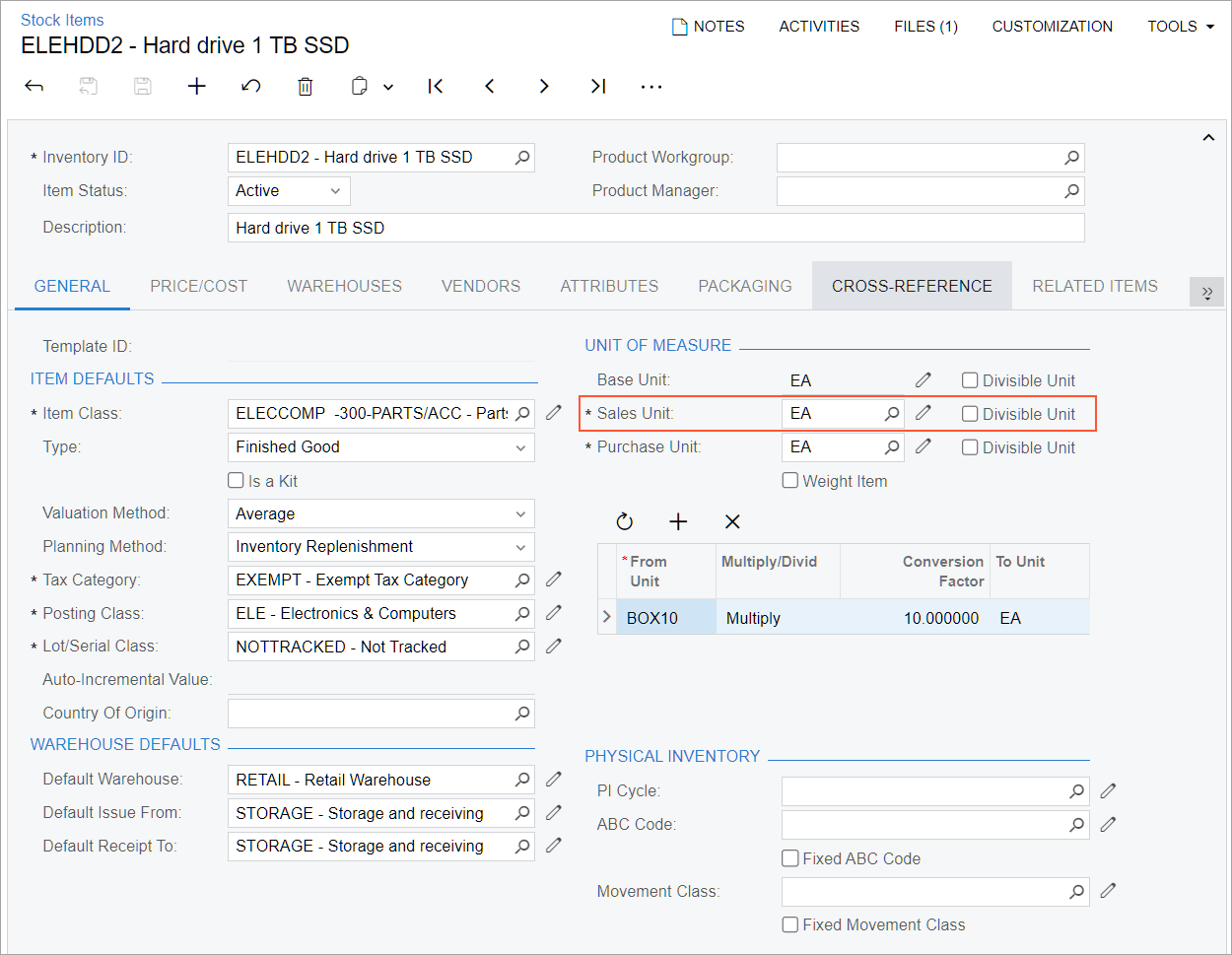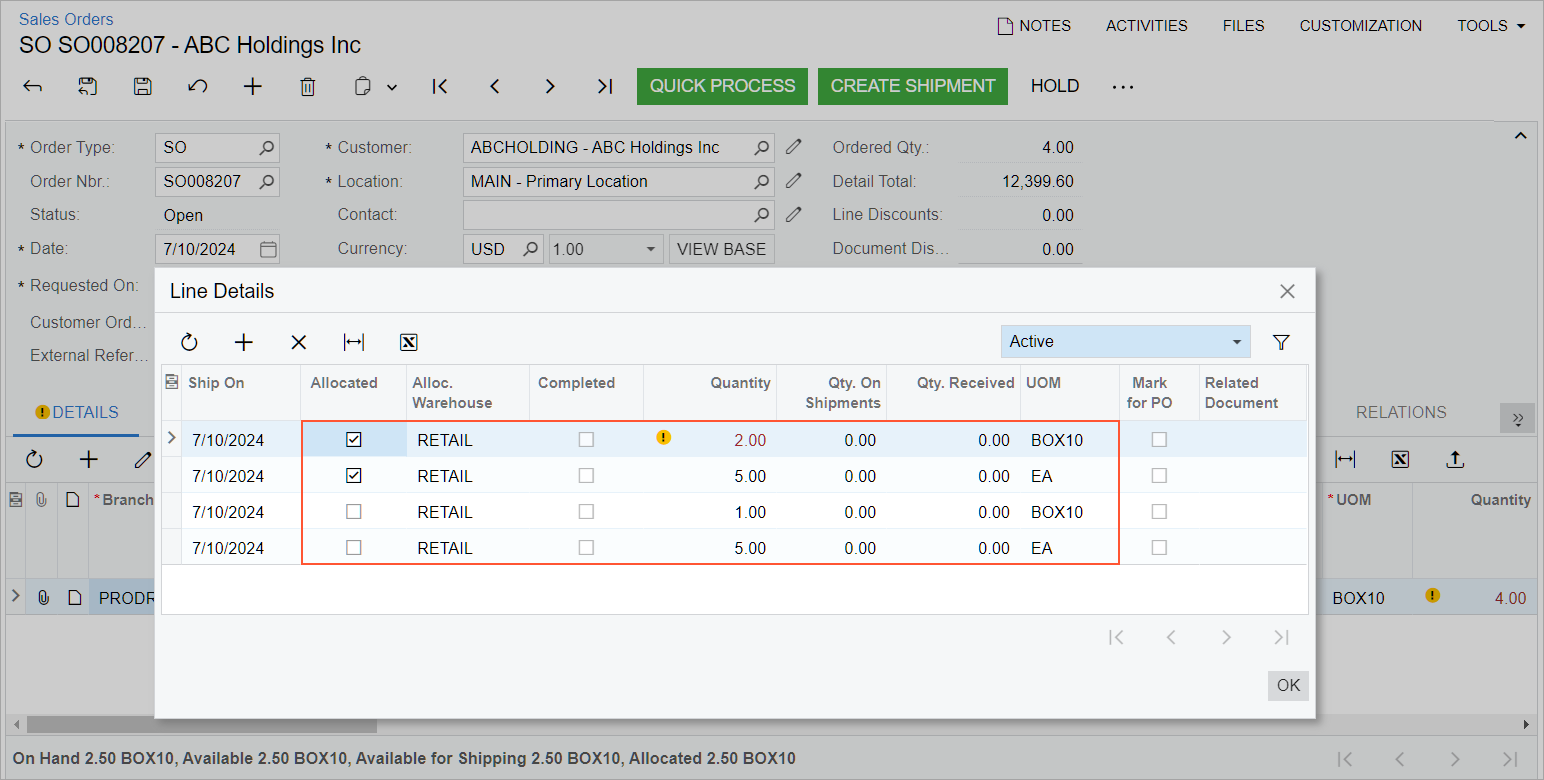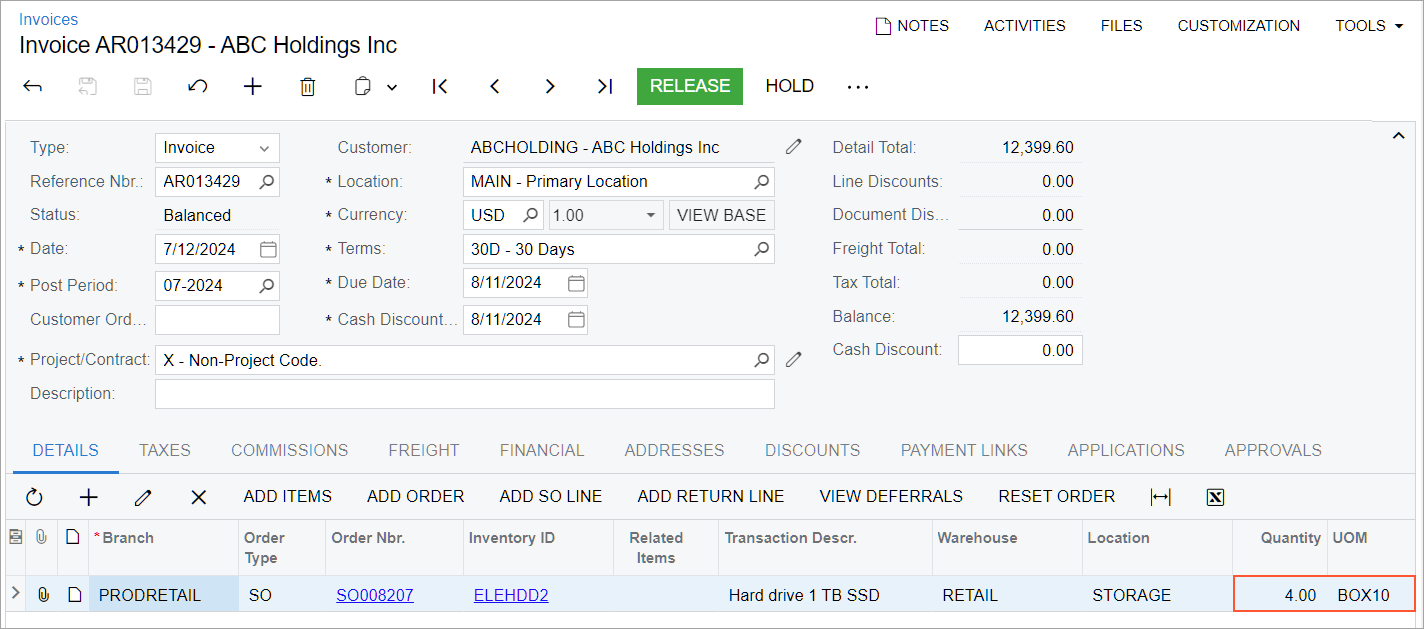Inventory and Order Management: Enhanced Stock Allocation with Multiple UOMs
In previous versions of MYOB Acumatica, if multiple units of measure (UOMs) were specified for a stock item and the item was included in a sales order, rounding differences could occur. This happened when a UOM different from the item's sales UOM was specified in the order line and the item was partially allocated for the sales order. The system used the order line’s UOM to calculate the allocated quantity. The resulting rounding differences could cause inaccuracies or errors in the processing of shipments and sales invoices.
Allocation of Stock Items in Multiple UOMs
Starting in MYOB Acumatica 2025.1, the system handles stock items with multiple UOMs differently when it partially allocates for a sales order an item that is either lot tracked or not tracked. The system now checks the state of the Divisible Unit check box right of the Sales Unit box on the General tab of the Stock Items (IN202500) form for the item (see the following screenshot).

Suppose that a line has an item quantity on the Sales Orders (SO301000) form. This quantity is specified for an item in a non-base UOM with the Multiply operation on the Stock Items form. A user opens the Line Details dialog box and selects the Allocated check box in the line split. If the quantity can be allocated only partially, the system does the following:
- Changes the quantity in this line split to the integer quantity in the order line's UOM if this quantity is available in a warehouse (that is, inserts this quantity in the Quantity column for the line split).
- If the available quantity in the order line's UOM is not sufficient in the warehouse but a few more item units in the base UOM are available, adds another line split for this quantity. For this line split, the system selects the Allocated check box.
- For any integer quantity that is not sufficient in the warehouse, adds another line split. For this line split, the Allocated check box is cleared.
- For the rest of the quantity in the base UOM that is not sufficient in the warehouse, adds another line split. For this line split, the Allocated check box is cleared.
See the following screenshot.

For a serial-tracked item, the system always splits lines on the Sales Orders form in the base UOM during the allocation.
Users can now allocate lot- and serial-tracked items without specifying their lot or serial numbers, respectively.
Processing on Other Forms
On the Create Transfer Orders (SO509000) form, the system adds the split lines with the UOMs specified in the Line Details dialog box of the Sales Orders (SO301000) form for the sales order.
When a user creates a shipment for the sales order on the Shipments (SO302000) form, the system adds to the shipment split lines specified in the Line Details dialog box of the sales order, as it did in previous versions of MYOB Acumatica.
On shipment confirmation, the system sums the splits of an order's line and when a sales invoice is created on the Invoices (SO303000) form, the system inserts the lines as follows:
- If the sum of all line splits is an integer value (that is, it can be fully converted to the order line's UOM), inserts the order line's UOM in the corresponding line of the sales invoice
- If the sum of all line splits is not an integer value, inserts the base UOM in the invoice line
Example of Stock Allocation
Suppose that a company sells computers and accessories, including 1 TB hard drives. It sells hard drives by piece and in boxes of ten pieces per box. The base and sales units of measure are EA (each), and a conversion to BOX10 (a box of ten pieces) is specified in the item's settings on the General tab of the Stock Items (IN202500) form.
Further suppose that a customer orders 40 hard drives. A salesperson creates a sales order for 4 boxes of hard drives. In the retail warehouse, only 25 hard drives are available (that is, two boxes and five pieces). The rest of the hard drives are available in the wholesale warehouse. Thus, the salesperson wants to allocate all the available hard drives in the retail warehouse to the order and transfer the rest from the wholesale warehouse.
On the Sales Orders (SO301000) form, the salesperson opens the Line Details dialog box for the order line with the hard drives and selects the Allocated check box in the line. The system splits the line as follows (see the previous screenshot):
- Line split 1: A quantity of 2 boxes, which are available and allocated in the warehouse.
- Line split 2: A quantity of 5 pieces, which are available and allocated in the warehouse.
- Line split 3: A quantity of 1 box, which is not available. The Allocated check box is cleared in the line because the quantity needs to be transferred from another warehouse.
- Line split 4: A quantity of 5 pieces, which are not available. The Allocated check box is cleared in the line because the quantity needs to be transferred from another warehouse.
When all the items are available in the retail warehouse, the shipment has been confirmed, and the sales invoice has been prepared for the order, the system sums the splits of the order line (see the following screenshot).

Additional Information
For more information on stock allocation with multiple UOMs, see Sales of Stock Items: Stock Allocation with Multiple UOMs and Sales of Stock Items: To Allocate Stock with Multiple UOMs and Process a Sale.
